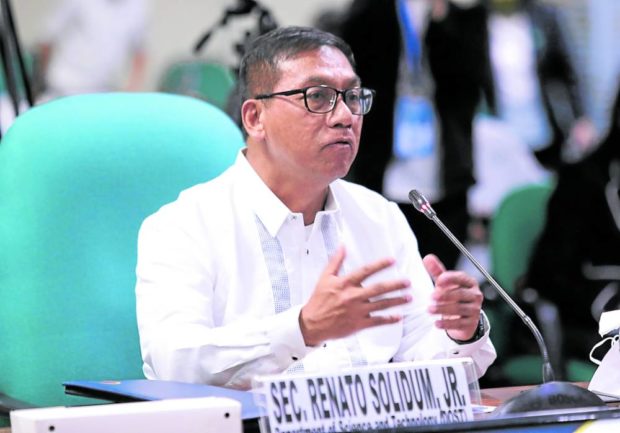
Department of Science and Technology’s (DOST) newly-appointed Secretary Dr. Renato Solidum, Jr. (Albert Calvelo/Senate PRIB)
Once dismissed as a scientific hoax in the 1970s, the government has now launched its own research and testing facility in a bid to get up to speed with strides in the development of hydrogen as a source of clean energy.
The Department of Science and Technology (DOST) and the Department of Energy (DOE) officially opened on Thursday the government’s first hydrogen fuel cell research and testing center at the DOST compound in Taguig City, where they are currently working on a fuel cell prototype made from local materials.
“Our need for affordable energy will never go away… We are looking to hydrogen as a possible source,” said Science Secretary Renato Solidum Jr., who was still in school when Filipinos first heard in the 1970s that a hydrogen isotope, called deuterium, could make the Philippines rich because there is supposedly so much of it in the Philippine Deep.
As it turned out, the development of energy from hydrogen was found to be prohibitively expensive, slowing down research and development (R&D) all over the world, except in Japan. By the 1990s, Japanese carmaker Toyota had unveiled the prototype of the world’s first hybrid hydrogen fuel cell vehicle, which was later developed into the Toyota Mirai sedan, the first commercially produced hydrogen vehicle.
At present, the DOST fuel cell team is working on a fuel cell proton exchange membrane that would allow hydrogen protons to pass through while blocking electrons and heavier gases for the fuel cell to generate energy.
Among others, Solidum said scientists from the University of the Philippines and De La Salle University are testing the viability of cotton, coconut and water hyacinth as possible materials.
For sustainable future
“Our goal is to develop a technology that’s comparable with other energy sources,” said Ronaldo Parreño, senior DOST research specialist and project leader. “Who knows, this can even be our solution to the high costs of electricity.”
Parreño told the Inquirer that the project is expected to be completed next year and they hope to test it on electric vehicles or possibly small household electrification.
Solidum said the center’s opening signals a “bold step toward a sustainable future” to help address problems in energy security and climate change.
Energy Secretary Raphael Lotilla, who also led the facility’s opening, said the point is to start and maintain R&D so we are not left behind again.
“The technology here is not yet that advanced because the costs are really high,” Lotilla said.
“What we’re doing here is to localize the research, use products that are locally available, so we don’t have to import materials that constitute parts of the fuel cell,” he said.
The fuel cell development is also crucial to the DOE’s renewable energy roadmap, which hopes to reduce the country’s reliance on fossil fuels, Lotilla said.
Currently, renewables only constitute 22.8 percent of the country’s energy mix, compared to coal at 37.1 percent and oil at 34.6 percent.
RELATED STORY:
DOE’s fossil gas projects in Batangas alarm green group